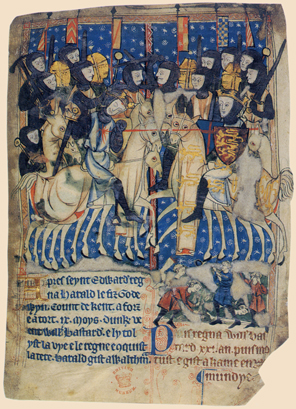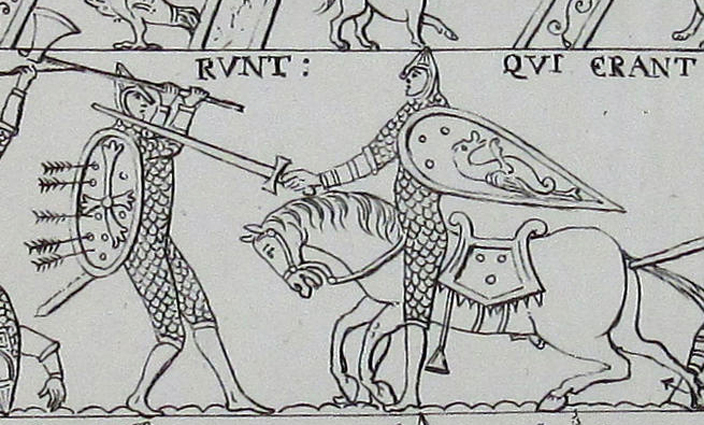The Battle of Hastings

The Battle of Hastings, from a thirteenth century manuscript. The Norman army is on the right, and William can be seen slaying Harold.
The Advantages of Waiting
William amassed a large army and fleet by the French coast at the end of July 1066, but did not set off on the prescribed date of August 1. Contemporary historians attribute his delay to strong winds.
There are likely to have been other, more strategic factors. William knew that Harold’s soldiers were waiting for him on the English coast, and that many of them were peasant soldiers, who could not be conscripted indefinitely. By waiting, William gave the impression of having decided to postpone his invasion, causing Harold’s army to retreat on September 8th.
The Norwegian Invasion
On September 18th, Harald Hardrada’s army landed close to York, forcing Harold to rush to the north. The two armies met on September 25th, and Harold was victorious, killing the Norwegian king.
William Across the Channel
Having allowed Harold to eliminate a joint adversary, and presumably weakening his army in the process, William’s army crossed over unimpeded into England three days later, landing on the south coast near Pevensey.
They waited as Harold’s army headed south to meet them.
It is thought that the two armies were roughly the same size: 7000 to 8000 men. They met at Hastings on October 14th, and although it was not to his advantage to do so, William allowed Harold’s army to take their positions on the ridge of the hill today called Battle.
Two Different Armies
Unlike William’s army, which had larger numbers of cavalry and archers, Harold’s troops were mainly infantrymen, both housecarls (elite soldiers) and fyrd (peasants). Harold’s housecarls formed a wall of raised shields that made the Normans’ difficult uphill advances futile: neither arrows, footman, nor cavalry could penetrate the English line.

Drawing of a scene from the Bayeux Tapestry, (produced in the 11th century depicting the Battle of Hastings). This scene shows a Norman knight (on the right) fighting with an English housecarl (on the left). The housecarl is holding a Danish axe.
Trickery When All Else Fails
William ordered one flank of his army to pretend to flee. Harold’s peasant soldiers could not resist, and chased them down the hill, only to be massacred by William’s cavalry. This tactic took place in successive waves, wiping out the fyrd.
William’s Triumph
Then William ordered his archers to get as close as possible to Harold’s wall of shields, and shoot their arrows high into the air. The Norman archers successfully overshot the line of English shields and many of Harold’s soldiers were killed and injured. Harold himself got an arrow in his eye.
William, accompanied by four men, penetrated the English line, found Harold and killed him, claiming victory.
The triumphant William headed to London. On Christmas day 1066, he was crowned king of England at Westminster Abbey.

